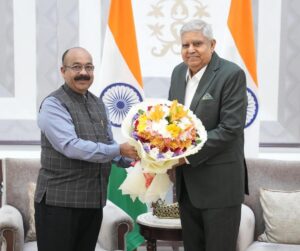Balancing regulation , creative freedom: The debate over OTT content censorship in India
4 min read
By Aditya Trivedi/ Ritwik Mehta
(Aditya Trivedi is Advocate, Delhi High Court and Founding Director, Arth Vidhi)
(Ritwik Mehta is political strategist and founder, Niti Tantra)
The debate regarding the regulation of Over-The-Top (OTT) content, including episodes and films broadcast on platforms like Netflix, Amazon Prime, and Disney+ Hotstar, by an entity similar to the Central Board of Film Certification (CBFC) is contentious. The swift proliferation of digital information has raised enquiries over cultural sensitivity, social standards, and the suitability of materials available to a broad audience.
All theatrical releases usually undergo scrutiny by the CBFC. This is implemented to ensure compliance with the laws and to uphold social and ethical standards. For instance, the 2003 film Paanch, directed by Anurag Kashyap, was censored by the CBFC due to its contentious content, characterised by excessive violence, gore, and profanity. Explicit and offensive material is frequently subject to censorship. Article 19(1)(a) of the Constitution gives all citizens of India the right to freedom of speech and expression; however, this right is not absolute and is subject to reasonable restrictions. Unfettered liberty can provide detrimental effects for individuals and communities. Films that exhibit destructive ideology, ignorance, violence, misogyny, and other socially undesirable themes must consequently undergo rigorous examination by the CBFC. Recently, audiences have increasingly gravitated towards content on OTT platforms such as Netflix, Amazon Prime, and Hotstar, rather than traditional cinema. This shift renders children, young adults, and adults a vulnerable audience, as OTT content frequently evades CBFC scrutiny, resulting in disparities between online and offline media. To guarantee equity, regulations should be enforced across all media formats. This is crucial as children and adolescents may encounter age-inappropriate content. Compliance with warnings and age-appropriate content is essential. It is imperative that we integrate creative autonomy with societal cohesiveness by pre-emptively evaluating content on OTT platforms to mitigate potential crises.
To truly understand its significance and ramifications more effectively, we could consider taking an international perspective by looking at the European Union’s (EU) Local Content Quota Policy. The EU requires streaming platforms such as Netflix, Amazon Prime, and Disney+ to incorporate a substantial percentage of European material in their catalogues and to invest in the development of local films and series, in order to promote cultural diversity and assist local companies. The policy and Audiovisual Media Services Directive (AVMSD) stipulate that a minimum of 30% of catalogue material must be of European origin. The objective is to safeguard European cultural heritage, enhance the visibility of local producers, and promote European works to a wider audience. This facilitates their discoverability by users, frequently through designated sections or suggestions. To foster India’s economic development, cultural preservation, local audience involvement, vernacular culture evolution, and internet expansion, it is imperative to provide content in regional languages. Furthermore, similar to the EU policy mandating OTT platforms to finance local content, either directly or via revenue taxes, this approach may also be implemented in India, which boasts a highly diversified audience across multiple languages and regions.
This policy in India could require equitable representation of diverse regional language content, such as Tamil, Telugu, Marathi, and Bengali. These may be assigned special recommendatory columns, potentially labelled as “regional content hubs” or “language-specific recommendations.” Tax incentives or rebates may be provided to OTT platforms that support local content. This will significantly enhance the regional entertainment business, which frequently has challenges in competing with Hindi and English language content. Individuals who communicate in the local dialect will experience a greater connection to contemporary society, as language serves as a significant barrier that might alienate them from modernity. India could implement more stringent copyright legislation to guarantee equitable revenue distribution between OTT platforms and indigenous producers, writers, and artists. This would enhance India’s content development ecosystem and guarantee that local talent benefits equitably from the expanding OTT market.
Nevertheless, this also presents peculiar hurdles. Some individuals may perceive this as a limitation on their creative autonomy due to excessive restriction and stringent quotas. Over-prioritizing local material may alienate the audience for worldwide series and films. It is crucial to limit the widespread dissemination of soft-pornographic content to which children and young adults are particularly susceptible. More severe sanctions may be enforced for content that contravenes established principles and standards, subject to evaluation by representatives from several disciplines, including media, law, and psychology.
The essential factor for successful implementation is the equilibrium of creative autonomy, market dynamics, and the promotion of local culture. Utilising financial investments and enhancing visibility for local productions via OTT platforms would offer essential assistance for India’s extensive and varied film industry






